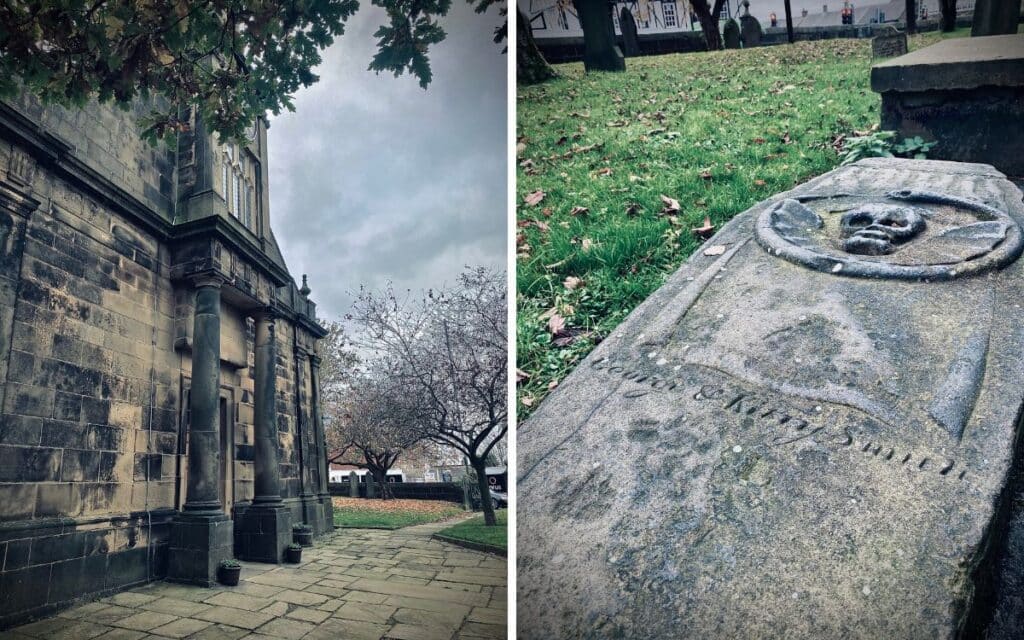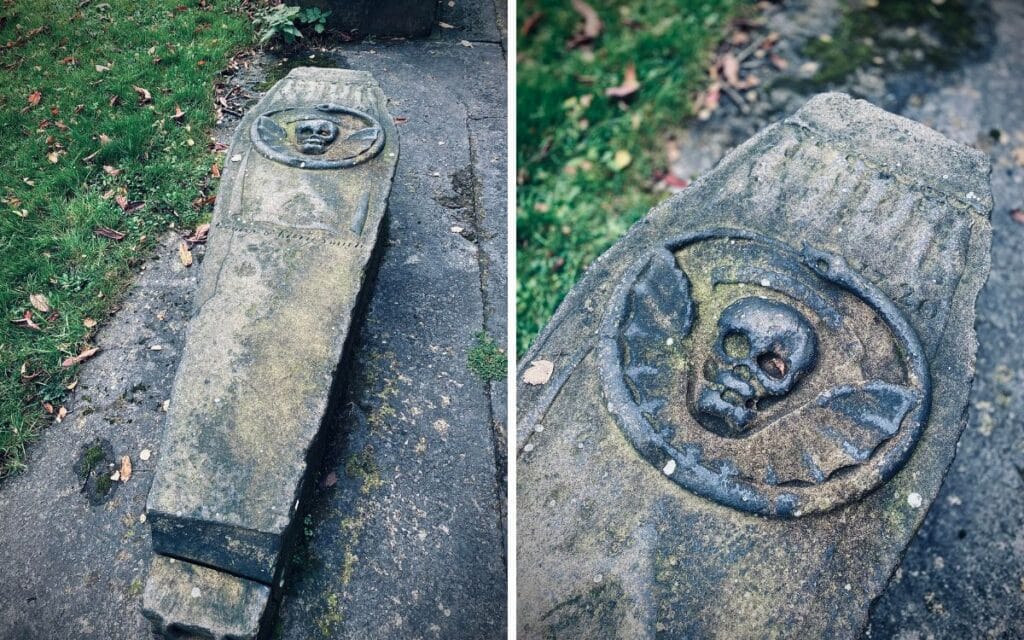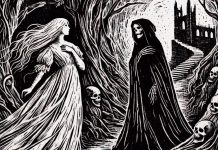The Billinge vampire grave, shrouded in eerie legend and whispered tales of the undead, lies hidden within the grounds of Merseyside’s St Aidan’s Church, writes RACHAEL ELIZABETH

In a quiet, unassuming village in Merseyside sits St Aidan’s church; within its grounds, a coffin-shaped grave stands out and legend has it that it is the eternal resting place of a vampire…
St Aiden’s Church is located in the quaint town of Billinge, St Helens, and is an active Anglican Parish Church that dates back to the 1700s; the church was built from 1716 to 1718 to replace a ‘Chapel of Ease’ that stood around in around 1539.
The stone Church is a beautiful but modest grade II listed building and within its graveyard, one particular plot has become a part of the local lore. The grave in question is a small 300-year-old coffin-shaped tomb that is located close to one of the church walls; carved within the stone is an eerie symbol comprised of a skull on a backdrop of batwings, encircled by a snake that is devouring its own tail, and it is this carving ack brought about the idea that the grave was that of a vampire.
It is easy to see why, more than 300 years ago, people would believe the grave could be that of a vampire, due to the Gothic carving, however, upon more research, it seems that the vampire grave legend may have been in vain, as the grave actually belongs to George and Kitty Smith.
The Legend of The Smiths
The story of George and Kitty Smith is one of tragedy and begins on one day in 1720. George, who was taking a break from work, settled himself on a grassy verge but was then bitten by a snake.
George is said to have died due to this bite, and his widow, Kitty, was so overcome with grief that she took her own life. The pair were then buried together in the coffin-shaped grave.
Although a tragic story, it is also problematic as the UK isn’t widely known for its poisonous snakes, but it is considered that rumours spread of the snake bite due to the carving on the tomb – it’s not to say that George wasn’t bitten by something, as a severe allergic reaction even from something like a bee, would be enough to kill a person without immediate medical help.
It is believed that the macabre memento mori etched into the stone is the reason why the grave became the focal point of a tragic gothic tale…
Gravestone Symbolism
The carvings in the stone certainly ooze gothic vibes, helped along by the coffin-shaped stone, but the symbols within the stone have their own meanings, which are not linked to vampires or the cause of death.
The wings that frame the skull are sometimes referred to as bat wings but are said to actually be angel wings and symbolise the ascent to heaven after death.
The snake is an “Ouroboru” (which is a snake that has come full circle and is engulfing its own tail) and is a symbol used to represent the eternal cycle of birth and death or time itself.

Upon closer inspection of the grave, above the skull motif, you can see the faint carving of what looks like drapes or curtains; these tend to symbolise mourning of the deceased, but drapery carvings have also been said to symbolise the veil between the living and death, and the eventual crossing of that plane.
As a final marker, one which is sure to squash any further rumours of a “vampire grave” is the faint carving that reads “George and Kitty Smith”.
The grave may not be a legend betrothed by vampires, but instead, it is a marker in the history of a great, somewhat gothic love story of two lovers who now share an eternal resting place.
What do you think of this tale of tragedy and symbolism? Have you visited the famous vampire grave at St Aidan’s? Let us know in the comments!







